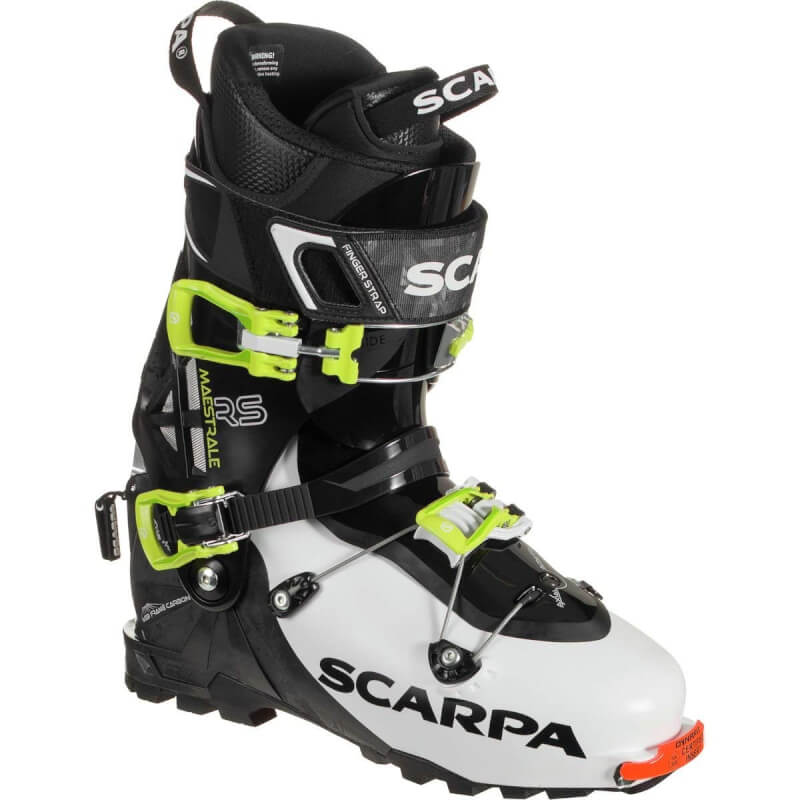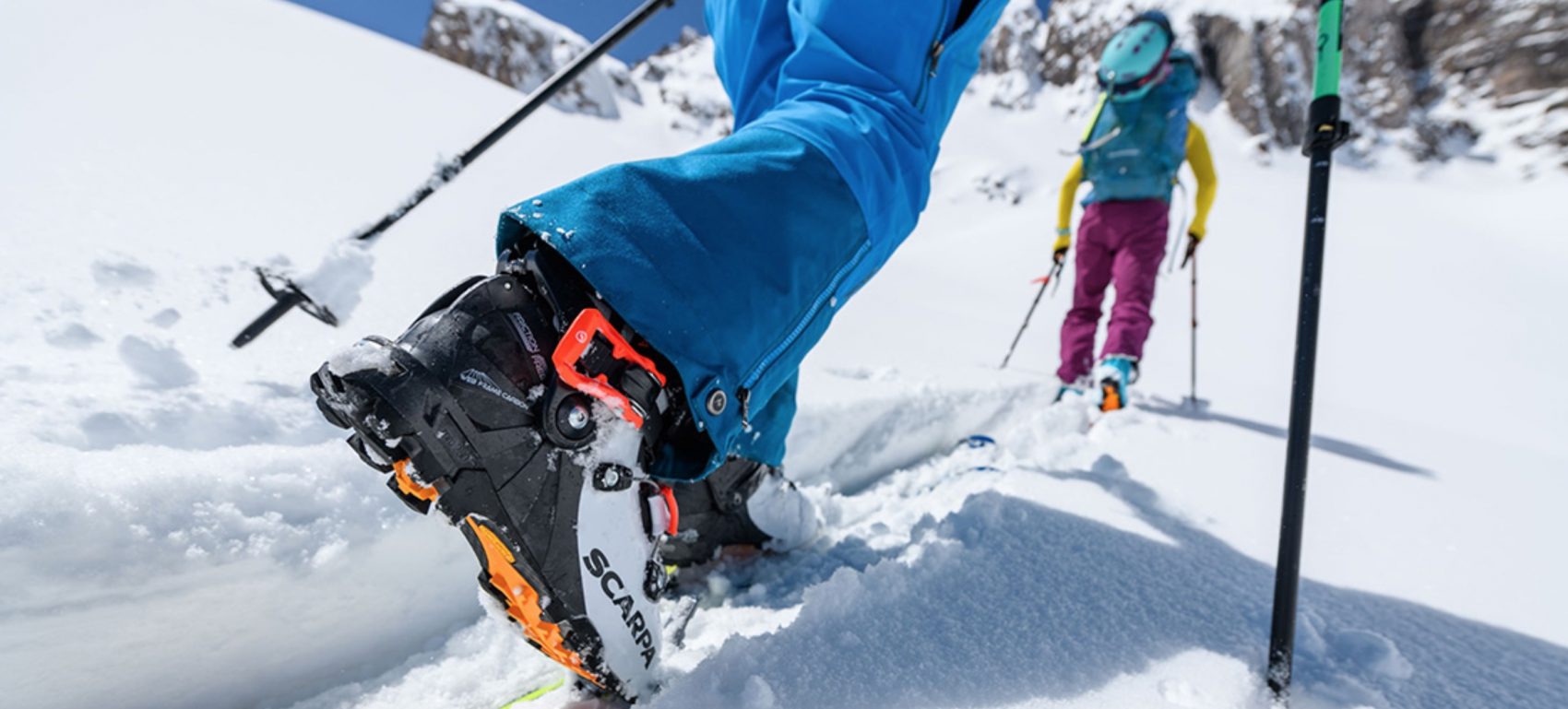
The use of Grilamid Bio in the cuff is a carbon-footprint conscious construction method as Castor bean oil is used to produce the monomer rather than petrochemicals. While the goal of the BC boot is to avoid pistes, testers said that tests on firm surfaces yielded solid, stable results, and they said that the boot did an admirable job of controlling the skis through variable and difficult snow conditions. The cuff height and stance angles worked well for skiing and touring both, testers said. The 101mm last labeling worked for our test team who said it fit slightly more generously in the toebox and forefoot but otherwise had a firm mediumish grip on the foot leg throughout, mentioning zero hot spots or fit issues, even without fully molding the Intuition tongue-style liner. The Gea RS sets the women’s backcountry boot standard for a solid blend of fit and performance skills, testers said, noting that the touring mode range of motion is one of the best in class. Testers like the even, medium width fit that comes with no surprises but rather a functional combination of comfort and hold for both touring and descending. One of testers perennial faves, the Gea RS did not disappoint again this year. As with modern Alpine boots, we now have the luxury of choosing the ski mountaineering boot that fits your foot-and your needs-best, rather than chasing performance.The 2021/2022 Scarpa Gea RS was tested in the women’s Backcountry category by the experts at America's Best Bootfitters, powered by Masterfit. The fit, feel, and character of the Maestrale RS and the Cosmos are a little different, but, subject to individual taste, it's hard to see how you could go wrong with either boot. In fact, as I kept the skiing the two boots, the Cosmos and the Maestrale RS, I found myself first of all delighted that two such fine choices should exist within the ski mountaineering niche, and second convinced that we've perhaps reached the point within that niche where there is no longer a good reason to chase ever-better downhill performance. For me, both boots meet that magic threshold where they become fully-credible inbounds performers.

In contrast, the Maestrale RS feels smoother to me, more forward, more damp, and perhaps a tad stiffer overall. The Cosmos' tongue does a better job spreading force across the shin, and the Cosmos' last is flatter beneath your foot, a point that some of us seem to notice and some don't. Of the pair, the Cosmos has a more upright and active feel. Still, what quickly becomes apparent is that both boots are very worthy choices. Admittedly this is an exaggerated test for boots in this class: on backcountry snow, skiers just aren't going to be as sensitive to fine graduations in downhill performance. To evaluate the Maestrale RS's skiing performance, I decided to spend a day comparing the RS head-to-head versus Garmont's Cosmos on firm groomed snow, inbounds. At the same time, the RS remains essentially the same boot, offering the very same excursion and even expedition-worthy features and functionality-climbing performance and comfort chief among them. The black-and-white RS is significantly stiffer than its orange predecessor. The RS version, first and foremost, fixes that issue. I loved the original Maestrale heading up on 24-hour marathon-style summit climbs, but I came to dread its "Am I still in walk mode?" softness whenever it came time to ski back down.


That first-generation Maestrale remains notable for its excellent climbing and mountaineering performance, but to be honest its skiing performance was always limited by its softness. The Maestrale RS is an updated, Polyamide version of Scarpa's original, orange (Pebax) Maestrale. Of the ski boots I've tried, Garmont's Cosmos and Scarpa's Maestrale RS are clearly the two ski mountaineering standouts for 2013.


 0 kommentar(er)
0 kommentar(er)
